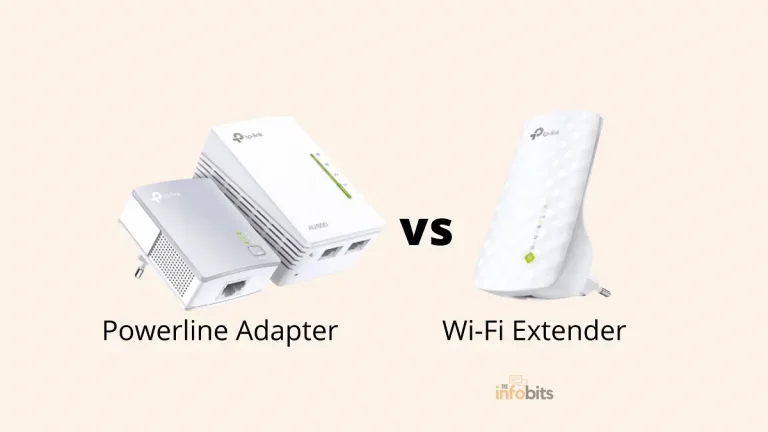Mesh Network vs Router: Which Setup Is Best for You?
In today’s digital age, having a reliable and efficient internet connection is more important than ever. Whether you’re streaming your favorite shows, surfing the web, or working from home, the choice between a traditional router and a mesh network can significantly impact your online experience.
Each option offers unique advantages and potential drawbacks, making the decision process crucial for achieving optimal connectivity.
In this article, we’ll explore the fundamental differences between mesh networks and routers, weigh their pros and cons, and guide you in making an informed choice based on your specific needs.
Defining Mesh Network and Router
To understand what might work best for you, it’s essential to know what mesh networks and routers are and how they function.
Each technology provides internet access but does so in distinct ways, catering to different needs and preferences.
Explanation of Mesh Network
A mesh network is a system of multiple devices, or nodes, that work together to distribute wireless coverage throughout your entire home.
Unlike a single router that radiates signals from one point, mesh networks can strategically place nodes around your house to eliminate dead zones and ensure consistent connectivity.
Mesh networks are designed to make setup as simple as possible, with node units often communicating wirelessly to route data.
This creates a seamless network experience where devices automatically connect to the strongest signal as you move around your home, making them ideal for expansive or multi-level living spaces.
Related: Mesh System Vs WiFi Extender: Which Is Better?
Understanding Routers: Function and Purpose
Routers are the most common means by which households connect to the internet. They act as a central hub that manages all the incoming and outgoing internet traffic through a single device.
A traditional router connects directly to your modem and transmits wireless signals throughout your home.
While routers have been the standard for many years, their performance can dwindle in larger homes with many walls and obstructions.
Placement becomes an important factor as the further you are from the router, the weaker the signal you may receive. Despite this, routers are generally simpler and more cost-effective, especially for smaller living spaces.
Related: Must-Have Features to Look for in a Router
Pros and Cons of Mesh Network
Mesh networks have taken the home internet setup world by storm due to their innovative approach to covering more ground.
However, as with any technology, they have their strengths and weaknesses, which are worth considering.
Advantages of Using a Mesh Network
One of the primary advantages of a mesh network is its ability to provide seamless and widespread coverage.
By using multiple nodes, you can effectively eliminate dead zones in larger homes or spaces with complex layouts. Each node acts as a repeater, ensuring that every corner of your house receives a strong signal.
Additionally, mesh networks offer a high degree of scalability. You can easily add more nodes to increase coverage as needed.
This flexibility makes them appealing to growing households or those planning to extend their living space in the future. Plus, many mesh systems support advanced features such as smart device integration and guest networks.
Disadvantages of a Mesh Network
Despite their many advantages, mesh networks are not without their downsides.
One significant con is the cost; mesh systems are generally more expensive than traditional routers due to the need for multiple nodes. This initial investment can be a deterrent for those on a tighter budget.
Mesh networks can also be more complex to set up and manage, particularly for users unfamiliar with technology.
Tweaking settings and optimizing performance may require more technical know-how. Additionally, the reliance on multiple nodes can create potential points of failure, where a malfunctioning node could affect overall connectivity.
Advantages and Disadvantages of Routers
Routers have long been the backbone of home network setups.
Their longevity in the market reflects their reliability, but it’s also essential to consider both their benefits and their limitations to determine if they remain the right choice for you.
Related: How Long Do Routers Last and When Should You Replace Them?
Highlighting the Benefits of Routers
In terms of affordability and simplicity, traditional routers are hard to beat. They provide a straightforward solution that requires little setup for immediate internet access.
For smaller homes or apartments, a single router can efficiently cover the required area, making it an efficient choice.
Routers are also known for their versatility. They are compatible with a wide range of devices and offer numerous customization options for security settings and network management.
This allows users to tailor their network preferences easily, often without the need for additional hardware.
Known Limitations of Using Routers
However, routers face limitations in coverage, especially in larger or multi-story homes where walls and obstacles can weaken signals. This often results in frustrating dead zones where connectivity is lost or significantly reduced.
Additionally, as more devices connect to the network, a single router may struggle under the load, leading to slowdowns and diminished performance.
Without the capability to extend coverage through additional nodes, optimizing a router’s placement becomes critical, which may not always be feasible depending on outlet availability and layout constraints.
Related: How to Boost WiFi Signal at Home or Office? 5 Easy Ways
Finding the Best Fit: Mesh Network Vs. Router
Choosing between a mesh network and a traditional router requires careful consideration of your specific needs and living situation.
Both systems have their places, and understanding the nuances of each will help you make the best decision for your home.
Choosing Based on Home Size and Structure
Your home’s size and layout play a crucial role in deciding the optimal internet setup.
For larger homes or those with complex structures, a mesh network might provide the comprehensive coverage necessary to eliminate dead zones, ensuring stable internet access in every room.
Conversely, for smaller apartments or homes, a single router may be sufficient. When strategically placed, a router can deliver robust connectivity without the need for additional nodes, offering a cost-effective and uncomplicated solution.
Selecting Based on Internet Usage
Internet usage patterns are another key factor in determining the best setup.
For families or homes with heavy internet use, such as streaming, gaming, or multiple devices connected simultaneously, a mesh network might offer the bandwidth and stability required to maintain high-performance levels.
On the other hand, if your use is moderate, involving basic web browsing and occasional streaming, a standard router could adequately meet your demands.
Understanding your usage helps balance performance needs with budget constraints.
Key Factors to Consider When Choosing
Beyond size and usage, other factors such as budget, technical expertise, and future-proofing are important considerations.
Mesh networks, while pricier, offer scalability and advanced features that might be beneficial in the long term.
For those who prefer a straightforward solution with lower initial costs, traditional routers remain a viable option.
It’s crucial to consider both your current and future needs, ensuring the choice you make supports any anticipated lifestyle changes.
Taking Action: Setting Up Your Chosen System
Once you’ve decided which technology aligns best with your needs, the next step is setting up your chosen system.
Proper installation is crucial for optimizing performance and ensuring your network runs smoothly from day one.
Steps to Set Up a Mesh Network
Setting up a mesh network generally begins with finding the best location for your main node, which connects directly to your modem.
This central piece is crucial for distributing the internet efficiently across all additional nodes.
After establishing the primary connection, place additional nodes strategically around your home to cover weak spots.
Most mesh systems offer an app-guided setup, simplifying the process by providing placement recommendations and configuration tips. Test connectivity and adjust placements as needed to optimize coverage.
Tips for Installing a Router
Installing a router is often more straightforward. Start by connecting the router to your modem using an Ethernet cable, ensuring placement in a centralized and elevated location to maximize signal dispersion.
Once connected, access the router’s interface via a web browser to set up your Wi-Fi network name and password.
Related: A Beginner’s Guide to Setting Up a Router in Your Home
This step is critical for securing your network and personalizing settings to fit your connectivity preferences. Regularly update firmware to maintain security and performance.
In conclusion, whether you opt for a mesh network or a traditional router, the key to a successful internet setup lies in understanding your specific requirements.
Evaluate your home size, internet usage, budget, and technical comfort to make an informed decision.
Both technologies have their strengths and can significantly enhance your online connectivity when properly implemented.
With the right setup in place, you can enjoy seamless and reliable internet access that caters to your lifestyle and ensures you’re always connected.
Please share this article with your friends and relatives if you find it useful.
We also ask that you bookmark this page for future reference, as we are constantly updating our articles with new information.
Sign up for our free newsletter as well to receive fresh information immediately in your inbox and keep technically up to date.







